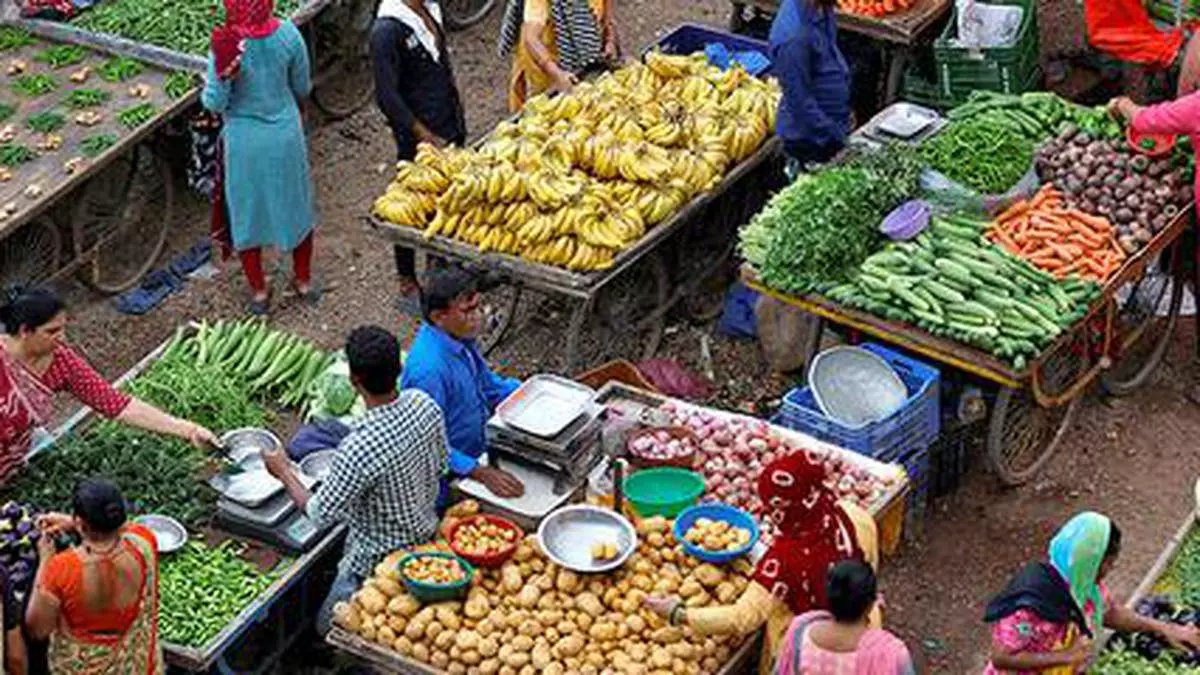Household demand for pulses, high-value food rising faster than other commodities: Niti Aayog
The area under fruits has increased significantly from 2.8 million hectares in 1991-92 to 6.8 million hectares in 2019-20 at an annual rate of 2.4 per cent, NITI Aayog report has said. Though the yield has increased, the growth has been a slow 1.13 per cent.
Also read: Why we need a central law to govern inter-state agri-commodities trading
“There is a significant change in food preferences across all expenditure classes and in rural and urban areas, away from staple foodgrains towards high-value food commodities such as fruits, vegetables, animal-source foods and processed foods and beverages.
“Thus, the household demand for pulses and high-value food commodities, including fruits, vegetables and animal-source foods, has been increasing faster compared to other food commodities,” the report said.
Nutri-cereals consumption is rising among higher income brackets (HIGs) and urban areas. Future demand for nutri-cereals is expected to rise. Despite cereals’ per capita consumption exceeding recommended levels, their demand is likely to surge, said the report “Crop husbandry, agriculture input, demand and supply”.
Fruit production up 4X
The production of fruit nearly quadrupled from 29 million tonnes (mt) in 1991-92 to 102 mt in 2019-20, an annual growth of 3.4 per cent. However, stagnant area under fruit crop has impeded production growth despite an average annual yield increase of 3.82 per cent from 2011-12 to 2019-20, said the report submitted by PS Birthal, Director at the ICAR-National Institute of Agricultural Economics and Policy Research, New Delhi. Vegetable production surged from 59 mt in 1991-92 to 188 mt in 2019-20, with an annual growth rate of 4.48 per cent. Despite an annual rise in area and yield of 2.99 per cent and 1.51 per cent, respectively, production growth slowed to 2.36 per cent during the recent decade.
Comparatively slow growth in production is due to deceleration in growth of the crop’s area and yield as well. Further, the yield has grown much less than the area, indicating that incremental production has largely come from area expansion, said the report by a 23-member working group set up by Niti Aayog in 2022.
In 2019-20, India emerged as the world’s second-largest fruit producer, yielding 102 million tonnes (mt). The country exported 0.83 mt of fresh fruits, predominantly grapes, pomegranates, mangoes, bananas and oranges. However, consumer preferences have shifted towards exotic fruits, prompting a notable surge in imports, particularly of apples, oranges, kiwis, avocados, cherries and blueberries. Fruit imports surpassed exports.
Linked to rising income
Similarly, India ranks second in vegetable production, harvesting 188 mt in 2019-20. It exported 1.93 mt of vegetables, significantly exceeding imports, which were pegged at a meagre 0.15 mt. The domestic availability of vegetables totaled 186 million tonnes in 2019-20.
The rise in household consumption of pulses and high value food commodities such as fruits, vegetables, milk and non-vegetarian products is strongly associated with the income of the households. With the increase in income, the demand is expected to increase at a faster rate compared to cereals.
By 2047-48, the demand for vegetables is expected to increase to 365 mt and that of fruits to 233 mt in a Business As Usual (BAU) scenario.
The report highlighted the urgent need to diversify from wheat and rice to pulses and oilseeds to bridge the demand-supply gap by 2047-48. According to the report, under a BAU scenario, domestic pulses production will rise to around 47 mt by 2047-48 from around 23 mt in 2019-20, while demand will grow to almost 49 mt during this period.
Edible production may double
“Their present production (of pulses) is insufficient to meet the demand. This gap may remain in future in the absence of yield improvements and acreage allocation to them,” the report said.
The report forecast edible oil demand to surge to approximately 31 mt by 2047-48 from 22 mt in 2019-20, with production expected to double to 24 mt from 12 mt over the same period. India currently imports about 60 per cent of its edible oil requirement. However, the decelerating growth in oilseeds production due to stagnant cultivation areas is concerning. Primary sources, mainly oilseeds, contribute around two-thirds of edible oil production, while the remaining portion comes from secondary sources like trees.
“Augmentation of oilseeds yield and production from secondary sources can reduce the gap in the short run and achieve self-sufficiency in the long run,” the report said.
In contrast, the report said rice demand is expected to be 110 mt in 2030-31 and 114 mt in 2047-48, compared with a projected production of 145 mt and 154 mt in the business-as-usual scenario. The report said wheat production, too, was expected to be sufficient to meet the future demand, leaving a surplus of 19-26 mt in 2030-31 and 40-67 mt in 2047-48.
Food demand may grow 3.07 per cent
The working group on agriculture proposes a review of the open-ended procurement policy for rice and wheat, aiming to encourage farmers to shift to crops like nutri-cereals, pulses and edible oil, as demand for these may outpace production by 2047.
According to the NITI Aayog report, under the BAU scenario, wherein recent economic growth rates persist, the overall food demand is projected to grow annually at 2.44 per cent by 2047-48. However, with accelerated economic growth, this rate could rise to 3.07 per cent.
Also read: Legally guaranteed MSP fine for pulses, oilseeds
Overall, for foodgrains, the NITI report said demand in 2030-31 is estimated at 326-334 mt and in 2047-48, 402-437 mt. The projected foodgrain production is 10-13 per cent (34-42 mt) more than the demand in 2030-31 and 5-14 per cent (22-55 mt) more in 2047-48.
